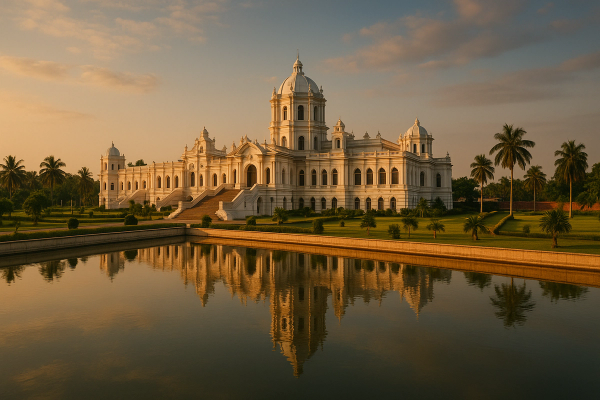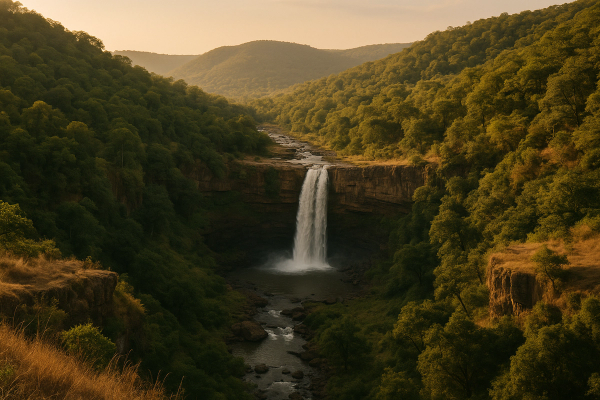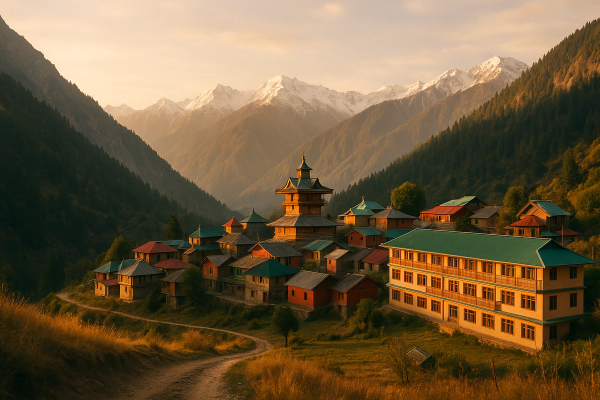
Salento, Colombia: Where Coffee, Clouds, and Color Collide#
Picture this: You're sipping arguably the world's best coffee on a vibrant balcony, gazing out at hills carpeted in emerald green. Later, you find yourself wandering beneath wax palms scraping the sky in a mystical cloud forest. This isn't a fantasy; it's just another day in Salento, Colombia. Nestled in the heart of the Eje Cafetero (Coffee Axis), this enchanting town is a feast for the senses and a balm for the soul. If you're planning South America travel, especially for cultural immersion or nature escapes, this Salento Colombia coffee region travel guide is your starting point for an unforgettable adventure.¶
Forget the frenetic pace of Colombia's big cities for a moment. Salento offers a different kind of magic – slower, greener, steeped in tradition, and bursting with charm. It’s a place where time seems to meander, inviting you to do the same.¶
Why Salento? A Glimpse into Colombia's Coffee Heartland#
Located in the department of Quindío, Salento is one of the oldest towns in the region and a gateway to some of Colombia's most iconic landscapes. Its high altitude (around 1,900 meters or 6,230 feet) blesses it with a cool climate and fertile volcanic soil – perfect conditions for growing exceptional coffee.¶
But Salento is more than just coffee. Its paisa architecture, with brightly painted facades and intricate wooden balconies, makes strolling through town an absolute delight. It serves as the main hub for visiting the breathtaking Cocora Valley (Valle de Cocora), home to the towering Quindío wax palm, Colombia's national tree. For nature lovers and cultural travelers, Salento offers a unique blend that feels both authentic and accessible.¶
Compared to more touristy spots like Cartagena or parts of Medellín, Salento retains a charming, small-town feel, though its popularity is definitely growing. It strikes a beautiful balance between offering traveler comforts and maintaining its local character.
Best Time to Visit Salento: Navigating Weather and Crowds#
Salento has a temperate mountain climate, meaning it can be quite cool (especially at night) and rain is possible year-round. However, there are distinct wetter and drier periods. Generally, the driest months offer the best chance for clear views and comfortable hiking.¶
Drier Seasons (Approx. December-March & July-August)#
These periods typically see less rainfall, making them ideal for hiking in the Cocora Valley and enjoying sunny strolls through town. Expect more sunshine and slightly warmer daytime temperatures.¶
- Pro: Best weather for outdoor activities, especially hiking the Cocora Valley.
- Pro: Vibrant atmosphere, everything is open and bustling.
- Con: This is peak tourist season (especially Dec-Jan and Holy Week/Semana Santa). Expect higher prices for accommodation and more people on trails and in town.
My Tip: Even in the 'dry' season, pack a raincoat! Salento's mountain weather is notoriously unpredictable, and afternoon showers are common.
Wetter Seasons (Approx. April-June & September-November)#
These months see more frequent and heavier rainfall. Hiking trails can get muddy, and cloud cover might obscure views in the Cocora Valley more often. However, the landscape is incredibly lush and green.¶
- Pro: Fewer crowds mean a more tranquil experience and potentially lower prices.
- Pro: The surrounding hills are intensely green and beautiful.
- Con: Higher chance of rain impacting outdoor plans. You'll definitely need good waterproof gear.
Coffee Harvests: The main harvest season is typically around April-May, with a smaller secondary harvest (mitaca) around October-November. Visiting during these times can add an interesting dimension to coffee farm tours.¶
Getting to Salento and Navigating the Region#
Salento doesn't have its own airport, but accessing it is straightforward via nearby cities.¶
By Air#
- Fly into Matecaña International Airport (PEI) in Pereira or El Edén International Airport (AXM) in Armenia. Both receive domestic flights from Bogotá, Medellín, Cartagena, and some international connections.
- From Pereira Airport: Take a taxi (around 20,000-30,000 COP) or local bus to the Pereira bus terminal (Terminal de Transportes).
- From Armenia Airport: Take a taxi (around 25,000-35,000 COP) to the Armenia bus terminal.
By Bus#
- From Pereira Terminal: Direct buses to Salento run frequently (roughly every hour) and take about 1 hour. Companies like Expreso Alcalá operate this route (cost approx. 9,000-12,000 COP).
- From Armenia Terminal: Direct buses to Salento are also frequent, taking around 45-60 minutes (cost approx. 6,000-9,000 COP).
- From other cities: You can take comfortable long-distance buses from Bogotá (approx. 7-9 hours), Medellín (approx. 5-7 hours), or Cali (approx. 3-4 hours) to Pereira or Armenia, then transfer to a local bus to Salento.
Getting Around Salento#
- Walking: Salento town itself is small and easily walkable. Most attractions, restaurants, and shops are centered around the main square, Plaza Bolívar, and Calle Real.
- Willys Jeeps: These iconic, colourful jeeps are the primary mode of transport for reaching the Cocora Valley and nearby coffee farms. They congregate at Plaza Bolívar. Shared rides to Cocora Valley cost around 4,000-5,000 COP per person each way. They leave when full, typically starting early morning (around 6:00 AM).
Local Tip: For the Cocora Valley hike, aim to catch one of the earliest Willys (before 8:00 AM) to beat the crowds and potentially enjoy clearer morning weather. Be prepared to stand on the back bumper for the authentic (and thrilling!) experience if the jeep is full!
Where to Stay in Salento: Finding Your Perfect Base#
Salento offers a fantastic range of accommodation, catering to backpackers, couples, families, and luxury seekers.¶
| Accommodation Type | Vibe | Typical Price Range (per night, double room) | Best For |
|---|---|---|---|
| Hostels | Social, budget-friendly, often with dorms and private rooms, tours/activities organized. | $15 - $40 USD (dorm bed $8-$15) | Backpackers, solo travelers, budget-conscious |
| Guesthouses / Posadas | Cozy, family-run, authentic local experience, often simple but comfortable. | $30 - $70 USD | Cultural immersion, couples, travelers seeking quiet |
| Boutique Hotels | Stylish, unique design, more amenities (restaurants, gardens), central or scenic locations. | $70 - $150+ USD | Couples, comfort seekers, special occasions |
| Coffee Fincas (Farms) | Rural setting, immersive coffee experience, often tranquil with beautiful views. | $50 - $120+ USD | Coffee lovers, nature enthusiasts, relaxation |
Popular areas include staying right in town for easy access to restaurants and the plaza, or slightly outside town (often walkable or a short taxi/Willys ride) for more tranquility and stunning views. Booking in advance is highly recommended, especially during peak seasons.¶
Unmissable Experiences: Your Salento Adventure Checklist#
Salento packs a punch when it comes to activities. Here are the absolute must-dos:¶
1. Hike the Mystical Cocora Valley (Valle de Cocora)#
This is likely the main reason you're considering Salento, and it absolutely lives up to the hype. Seeing the towering Quindío wax palms (Palma de Cera), some reaching 60 meters (200 feet), emerge from the mist is an almost spiritual experience. These are the tallest palm trees in the world!¶
- Getting There: Take a Willys Jeep from Plaza Bolívar (approx. 25 mins).
- The Hike: The classic loop takes about 5-6 hours. You can hike it clockwise (starting through farmland, crossing suspension bridges, climbing to Acaime hummingbird sanctuary, then descending through the main palm valley) or counter-clockwise (entering the main palm valley first, then climbing). Counter-clockwise gets you to the iconic palms quicker but involves a steeper ascent later.
- Key Stops: The main wax palm viewpoint (Mirador), the suspension bridges (puentes colgantes), and optionally Acaime (a small hummingbird sanctuary with an entrance fee, approx. 6,000 COP, includes a simple drink) or Finca La Montaña (a viewpoint farmhouse).
- Entrance Fees: There are typically two small entrance fees along the trail (paid to local landowners), around 5,000-6,000 COP each. Bring cash.
- What to Wear/Bring: Sturdy hiking shoes (it gets muddy!), layers of clothing, a good raincoat, water, snacks, sunscreen, hat, and cash.
Insider Tip: The trail can be confusing in parts. While guides aren't strictly necessary for experienced hikers, downloading an offline map app like Maps.me or Wikiloc can be very helpful.
2. Immerse Yourself in Coffee Culture: Take a Farm Tour#
You can't visit Colombia's coffee region without learning about its most famous export. Several fincas (coffee farms) around Salento offer insightful tours.¶
- What to Expect: Tours typically walk you through the entire coffee process, from bean planting and harvesting to processing (washing, drying, roasting) and finally, tasting.
- Popular Fincas:
- * Finca El Ocaso: Very popular, offers tours in English and Spanish, beautiful setting. Often reachable by Willys or a scenic walk (around 1 hour).
- * Don Elias: A smaller, family-run organic farm offering a more intimate and traditional experience. Also walkable or reachable by Willys.
- * Las Acacias Coffee Farm: Another well-regarded option close to town.
- Cost & Duration: Tours usually last 1.5-3 hours and cost between 25,000 - 60,000 COP, depending on the farm and tour depth.
Learning about the complexities of coffee production and the challenges faced by farmers adds immense appreciation to your daily cup.¶
3. Wander Through Salento's Colorful Streets#
Dedicate time simply to get lost in Salento's charm.¶
- Plaza Bolívar: The heart of the town, buzzing with activity, surrounded by cafes, restaurants, and the church (Iglesia Nuestra Señora del Carmen).
- Calle Real (Carrera 6): The main pedestrian street, lined with artisan shops, handicraft stores, cafes, and incredibly photogenic colorful buildings.
- Miradores (Viewpoints): Climb the steps at the end of Calle Real to the Alto de la Cruz viewpoint for panoramic views over Salento and the surrounding hills. There's another viewpoint, Mirador de Salento, offering different perspectives.
- Play Tejo: Try Colombia's national sport! Tejo involves throwing metal discs (tejos) at targets (bocines) filled with gunpowder, aiming for an explosion. Los Amigos bar is a popular spot to give it a go (usually free to play if you buy drinks). It's loud, potentially messy, and incredibly fun!
Savoring Salento: What to Eat and Drink#
The food scene in Salento is hearty, local, and delicious.¶
- Trucha (Trout): The local specialty! Usually served grilled or fried, often al ajillo (with garlic) or covered in a creamy mushroom sauce. It almost always comes with a giant patacón (fried plantain). Try it at restaurants along Calle Real or Plaza Bolívar.
- Patacones: These crispy, smashed, fried green plantains are a staple side dish, often served large and topped with hogao (tomato and onion sauce) or guacamole.
- Bandeja Paisa: While more typical of the wider Antioquia region, you'll find this massive platter featuring beans, rice, minced meat, chorizo, fried egg, avocado, chicharrón (fried pork belly), and an arepa in many local restaurants.
- Arepas: Cornmeal patties served everywhere, often with cheese or various toppings.
- Colombian Coffee: Obviously! Enjoy expertly brewed cups at specialty coffee shops like Café Jesús Martín or right at the source on a coffee farm tour.
- Fresh Juices (Jugos Naturales): Colombia boasts incredible fruit diversity. Try juices made from lulo, mora (blackberry), guanábana (soursop), or maracuyá (passion fruit).
Must-Try Spot: Brunch de Salento is legendary for its huge, delicious breakfast and lunch plates, including amazing trout dishes and vegetarian options. Be prepared for a potential wait, it's popular for a reason!
Practical Tips for Your Salento Trip#
A few handy tips to make your Salento Colombia coffee region travel guide experience smoother:¶
Packing Essentials#
- Layers: Salento's weather changes quickly. Pack t-shirts, long-sleeved shirts, a fleece or sweater, and a good waterproof jacket.
- Rain Gear: A waterproof jacket is essential. Waterproof pants and shoes are highly recommended for Cocora Valley, especially in wetter months.
- Footwear: Comfortable walking shoes for town and sturdy, broken-in hiking boots with good grip for Cocora Valley.
- Sun Protection: Sunscreen, sunglasses, and a hat – the sun can be strong at altitude, even on cloudy days.
- Insect Repellent: Especially for hikes and evenings.
- Cash: While ATMs are available in Salento, they can sometimes run out of money, especially on weekends. Many smaller shops, restaurants, and tour operators prefer cash (Colombian Pesos - COP). Bring enough for daily expenses and entrance fees.
Budget Considerations#
- Accommodation: Hostels ($8-$15/dorm), Guesthouses ($30-$70/private), Hotels ($70+).
- Food: Local meals ($5-$10), Restaurant dinners ($10-$20), Coffee ($1-$3).
- Activities: Cocora Valley transport + fees (~$5-$8), Coffee Tour ($10-$20).
- Daily Budget: Budget travelers can manage on $30-$40 USD per day. Mid-range travelers might spend $50-$80 USD per day.
Safety & Health#
- Salento is generally considered safe for tourists. Exercise standard precautions: be aware of your surroundings, don't flash valuables, and avoid walking alone late at night in unlit areas.
- Altitude: Salento is at 1,900m. While not extremely high, some people might feel mild effects. Stay hydrated and take it easy on your first day.
- Tap Water: It's generally advised to drink bottled or filtered water.
Language & Etiquette#
- Spanish is the official language. While many people in tourism speak some English, knowing basic Spanish phrases (Hola, Gracias, Por favor, Cuánto cuesta?) is appreciated.
- Colombians are generally polite and friendly. A smile and a courteous greeting go a long way.
Connectivity#
- WiFi is common in hotels, hostels, and cafes, but speeds can be variable, especially outside the town center. Consider getting a local SIM card (Claro, Movistar, Tigo) for better connectivity if needed.
Responsible Travel in Salento#
Salento's beauty relies on sustainable tourism practices. Here’s how you can help:¶
- Respect the Environment: Stick to marked trails in Cocora Valley to protect the fragile ecosystem and prevent erosion. Pack out everything you pack in – leave no trace.
- Support Local Businesses: Choose locally owned guesthouses, restaurants, and artisan shops. Opt for coffee tours run by local families.
- Ethical Coffee Choices: Look for farms that practice sustainable agriculture and fair labor practices.
- Conserve Water & Energy: Be mindful of your resource consumption in accommodations.
- Cultural Respect: Ask permission before taking photos of people. Engage respectfully with locals and try to learn a few words of Spanish.
Salento: More Than Just a Pretty Place#
Salento is one of those destinations that captures your heart. It's the combination of the staggering natural beauty of the Cocora Valley, the warmth of the local people, the rich aroma of coffee hanging in the air, and the sheer vibrancy of its streets. It offers a perfect slice of South America travel, blending adventure with culture in a way that feels deeply Colombian.¶
Whether you're a seasoned nature lover, a cultural travel enthusiast, or simply seeking a beautiful escape, Salento delivers. It’s a reminder of the magic that happens when nature, tradition, and community intertwine.¶
Have you visited Salento or explored Colombia's coffee region? Share your own tips and favorite experiences in the comments below! Ready to plan your trip? Pin this Salento Colombia coffee region travel guide for later! Check out more travel inspiration at https://allblogs.in.¶














